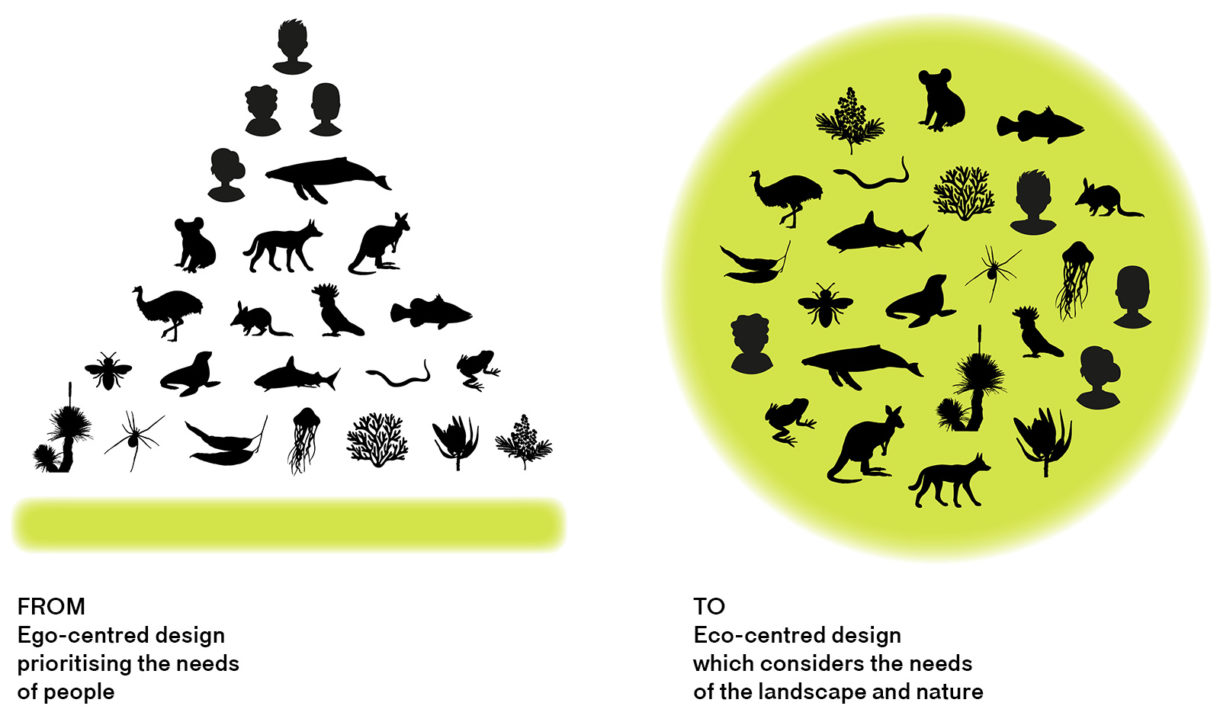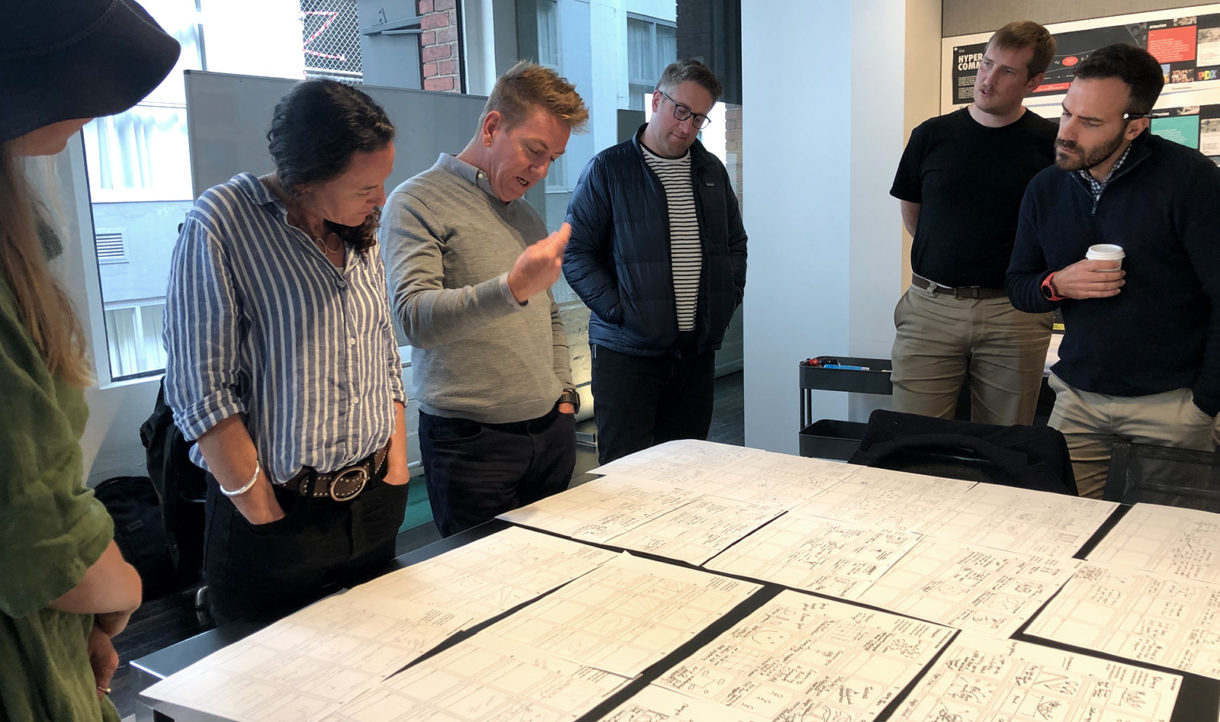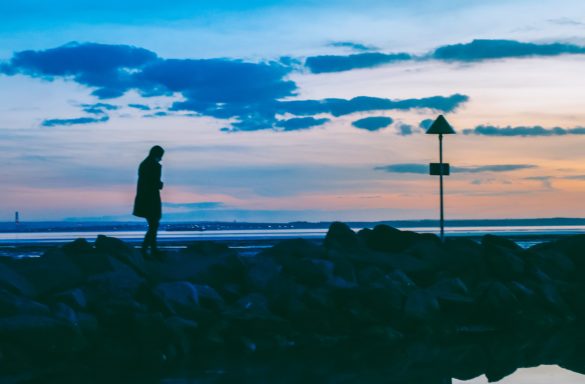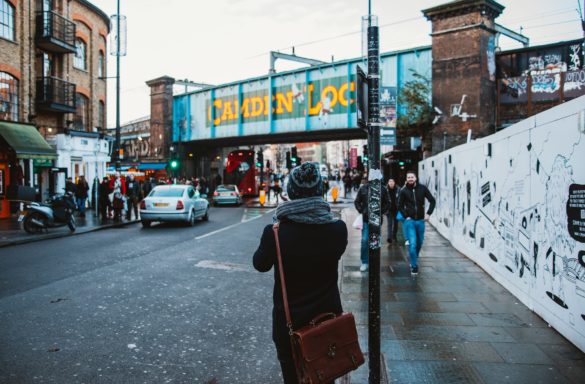ARTICLE
Co-designing for a better design practice
3:47:07 11 April 2022
37°49’33”S 144°58’27”E
Built environment practices are increasingly needing renovation – clients are demanding it, and practices are morphing to cater to it. We see the critical need for a new kind of service offering – one centred on community-led research and a methodology of including people in public policy, place management and built environment design. The underlying philosophy being, if we’re designing for people, then why not design with them. We’ve had a change of the guards, and it’s obvious that a people-centric approach to public realm design is key to enhancing the successful adoption and advocacy of places, all in the name of creating better places for the future.
Experience masterplanners, FreeState, have been pioneering a new method through co-design – a participatory approach that has proven to not only improve environments, but results in more socially useful, commercially astute and continuously relevant places. Ultimately, if we include people in the journey, co-design supports evidence-based decision making and therefore reduces risk, in short- and long-term community-making projects. The principles of citizen-led co-design have been the foundation of FreeState’s practice for over 20 years – identifying the need for people-centric approaches to envisioning places that are participatory, inclusive and collaborative. It’s a philosophy that sees the role of the designer, the client, the researcher and the people formerly known as ‘users’ evolve. We are all experience masterplanners.
What is co-design?
‘Co’ can come in many forms of a given project, but here we will focus on co-design as collaborative research and as a visioning and planning tool. In a co-design process, the roles change: the people who will eventually be served through the design process take on the position of ‘knowledge experts’, and play a large role in research development, idea generation and concept development1.
It’s a process that can help designers and city-makers define real problems, be more empathetic and work through competing priorities for the places they’re creating, as well as being an idea- and thematic-generating method. The approach sees community representatives become genuine partners and advocates in place visioning, design and activation. Designers can also create more innovative concepts when working within a co-design environment, which is crucial to solving the environmental and social problems of the future2.
The old process of building buildings and then thinking about the content or the programming is outmoded. Today, we need places that have been planned with future uses in mind, allowing space for what people inherently want and need, as filtered and built upon together through the co-design process. While the function and look of the building or urban realm is still essential to design, co-design tends to focus more on the meaning, experience and impact of a place.
Historical roots of co-design
The beginnings of the participatory design movement can be traced to a conference called Design Participation, held by the Design Research Society in Manchester 19713. The FreeState participatory practice emerged from interdisciplinary design-a-thons, as normalised in university circles, and the best of modern day human-centred research, service design and design thinking workshops. However, great social, economic and political movements paved – and continue to pave – the way for these conditions to emerge and flourish.
Anti-colonial movements, second wave feminism, critical race theory, disability rights movements, post-human and ecological analyses4, and the more recent global movement to return to Indigenous knowledge systems, practices and land care, has primed the conditions we have today. In coordination with a societal turn towards the arts, humanities and social sciences, the role of the experience masterplanner in the creation of more responsive, and responsible, places, societies and narratives is developing rapidly. Rise up the activists and academics of architecture who champion participatory action and collaborative research practices!

Image: Ego-centric to eco-centric diagram, adapted from German architect Steffen Lehmann (2010)
Co-design methods and successes
A design practice centred on people’s needs or societal needs requires a different approach of inquiry – wider views, and larger scopes of investigation. It probes at unmet needs and aspirations for groups of people affected. Two ongoing projects by FreeState have demonstrated the ability to address larger societal needs through a co-design process. One project is a large workplace campus intervention with a focus on social cohesion and urban realm activation across diverse streams of employees. The other involves community representatives coming together to envision the revitalisation of a historical precinct with deeply complex, competing narratives.
Co-design as a project philosophy positively changed what was designed, how it was designed, and who designed it5. The impact upon the designers, community representatives and client teams was palpable. The patterns of change taking place in the transition from a building-first perspective, to a purpose- and people-first perspective demonstrated the success of this approach in both cases.
The co-design practice that FreeState has forged combines design thinking methodologies with narrative theories. Design thinking activities such as interviews, observations, creative warm-ups, rapid ideation, SCAMPER, journey mapping and idea prototyping. Narrative theories, studied and developed over 20 years from the masters of storytelling such as Disney and Joseph Campbell, have come together to form FreeState’s ‘5 C’s of experience’, and their narrative arc of ‘attraction, involvement and belonging’ that are successfully used in the conception of new and innovative social and spatial experiences. In combination, this process has delivered profound, co-created outcomes with exponential impact.
It makes the role of the experience masterplanner ever more important as both translator and facilitator. Designers, clients and community representatives alike enjoy the empowerment, but it is the successful planning and facilitation by the well-trained and deeply empathetic experience masterplanner as expedition leader that reveals the truly transformative and integrated outcomes we all seek.

Image: FreeState co-design workshop
Impact of integrated storytelling
Our brains and memories love stories. And storytelling is intrinsic to nations and places with Indigenous knowledge and practice systems – where place is connected to story, and story is connected to place. But many of our places and spaces have contested histories and competing storylines.
Story-listening and -gathering is a key part of the co-creation process as it facilitates collaboration and relationship-building between diverse community groups. But much needs to happen before this can be done openly. There’s a level of cultural awareness and sensitivity that is best acknowledged through rituals and hosting, such as warm welcomes, Acknowledgement of Country, participants introducing their unique relationship, and role, to tackle the problem at hand. Collectively, we address and uncover ways that make people feel welcome and safe in particular places to create experiences that they would want to be a part of, advocate for, and feel like they belong to.
Through a series of facilitated storytelling exercises, stories connected to a particular site emerge, and pasts, presents and futures are spoken into being. It allows conceptual threads to emerge from across participants’ stories. Holding people in the storytelling space gives a chance for the team to talk about the narratives and socio-cultural outcomes, leaving space for collective dreaming, with reduced pressure on the team to come up with built form outcomes.
When at its most successful, this process of visioning starts upstream before any building-led scope has been commissioned. It’s a holistic way of approaching the design process – integrating Indigenous knowledge and perspectives alongside other underrepresented groups – as a basis for further design thinking, making sure they are included right at the start. It’s a holistic approach to not only the way a building or public realm is designed, but also its activation and ongoing use, for example, opportunities for Aboriginal businesses to be designed into the conception, management and ongoing care of the place, both during and after the build.
Integrated storytelling is a thing of many hands. It is more than a focus group, and more than one stakeholder consultation session. It is also messy and complex. And the aim is to not distil the complexity into five neat design principles, but rather lean into the complexity and celebrate the wildly different storylines and how they interplay. That’s what makes a place’s personality, like people, so interesting.
Towards a better practice
Co-design, although established in other disciplines, is an emerging practice in the built environment, and so too is FreeState’s methodology. The complexity with which we are working within is without doubt the reason why it has not been popularised until recently. But the outcomes of co-design and co-production in this way, building something together over a series of weeks and facilitated workshops, is starting to build an outstanding set of case studies, at large scales, in the built environment sector. In a time when the industry is racing to counter-control the implications of environmental and social sustainability threats, we believe these use cases show, collectively, that another way is possible. They demonstrate that sustained collaborative partnerships between practitioners, publics, society members, institutes and artists are not only possible, but that they can and do produce knowledge, experiences and insights that are both intellectually robust and socially powerful.
MTalk at MPavilion
For more specifics on how and why we ‘co’, join us in Melbourne at MPavilion with a panel of co-experts as we explore methods and ways to keep getting better and better.
1 Co-creation and the new landscapes of design. Sanders and Stappers (2008).
2 People-centric approach to design is key to enhancing standards of living. UNSW.
3 Challenges in co-designing a building. Min Hi Chun (2016).
5 Co-creation and the new landscapes of design. Sanders and Stappers (2008).
Header & Teaser image by Federico Scarionati



